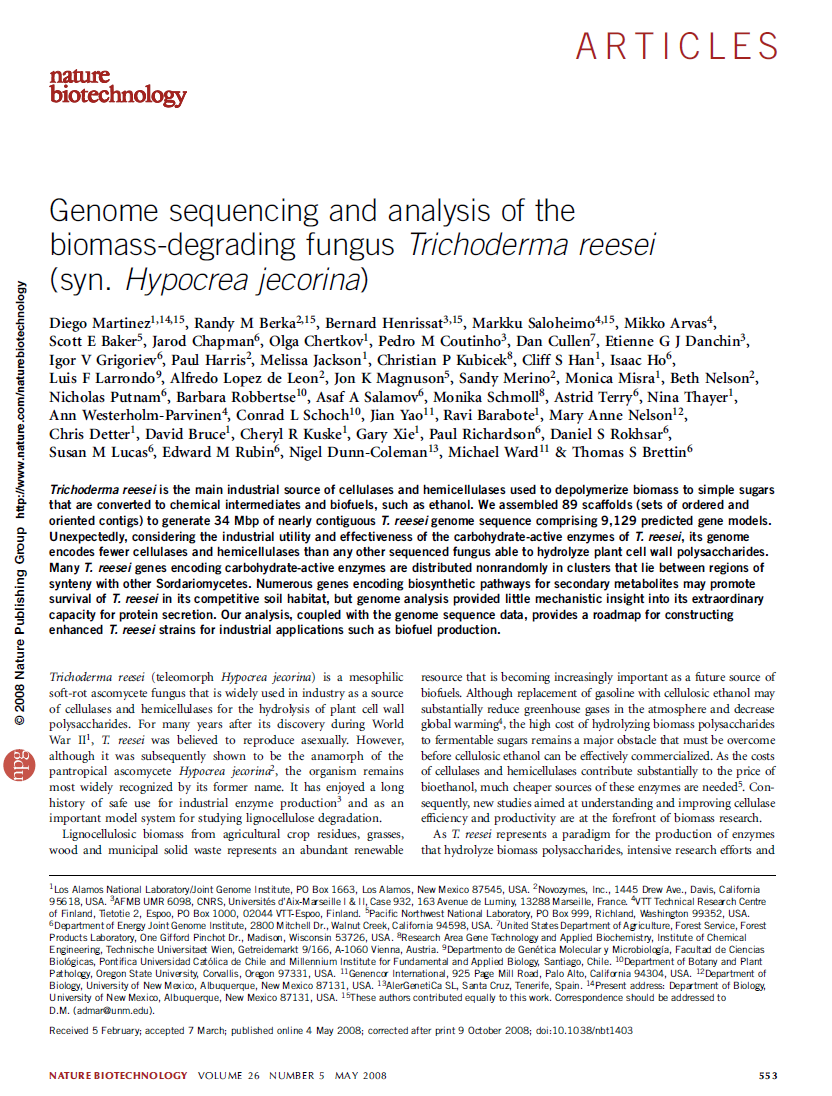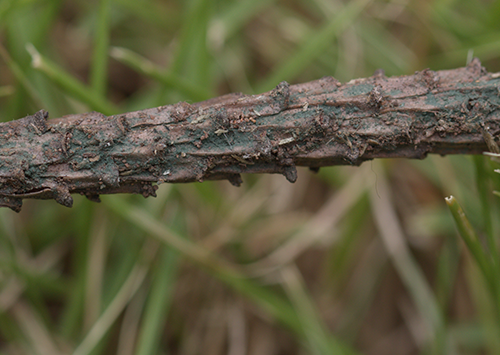Martinez et al., 2008 Genome sequencing and analysis of the biomass-degrading fungus Trichoderma reesei (syn. Hypocrea jecorina) Nature Biotechnology
Abstract
Trichoderma reesei is the main industrial source of cellulases and hemicellulases used to depolymerize biomass to simple sugars that are converted to chemical intermediates and biofuels, such as ethanol. We assembled 89 scaffolds (sets of ordered and oriented contigs) to generate 34 Mbp of nearly contiguous T. reesei genome sequence comprising 9,129 predicted gene models. Unexpectedly, considering the industrial utility and effectiveness of the carbohydrate-active enzymes of T. reesei, its genome encodes fewer cellulases and hemicellulases than any other sequenced fungus able to hydrolyze plant cell wall polysaccharides. Many T. reesei genes encoding carbohydrate-active enzymes are distributed nonrandomly in clusters that lie between regions of synteny with other Sordariomycetes. Numerous genes encoding biosynthetic pathways for secondary metabolites may promote survival of T. reesei in its competitive soil habitat, but genome analysis provided little mechanistic insight into its extraordinary capacity for protein secretion. Our analysis, coupled with the genome sequence data, provides a roadmap for constructing enhanced T. reesei strains for industrial applications such as biofuel production.



No comments! Be the first commenter?